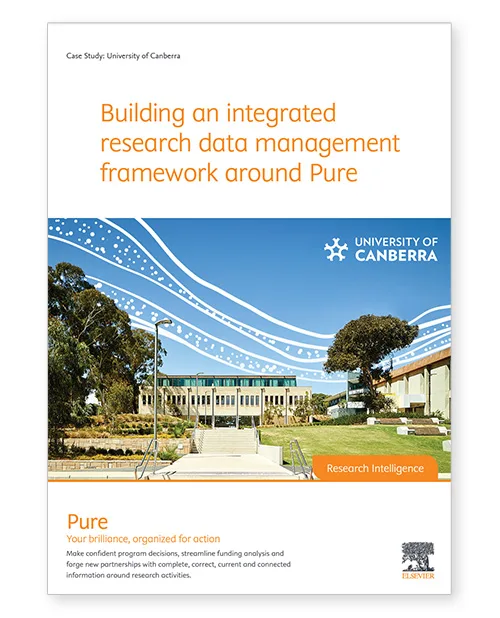Ready to find out how it works for your institution?

很遺憾,我們無法支援你的瀏覽器。如果可以,請升級到新版本,或使用 Mozilla Firefox、Microsoft Edge、Google Chrome 或 Safari 14 或更新版本。如果無法升級,而且需要支援,請將你的回饋寄給我們。
With today’s high level of interest in research integrity, transparency and openness, reinforced by policies sharing this direction, research data is rapidly rising up the agenda and now it’s time for action. Find out how to elevate your research excellence with Elsevier’s Research Intelligence toolset.
Use cases for research tracking
Your 10-step plan to begin tracking your institutional research data

Discover what the University of Canberra did in response to The Australian Code for the Responsible Conduct of Research which came into effect in 2019 and dictated principles of how data is stored, accessed and shared, and laid the onus of compliance on institutions and individual researchers.

10 things I wish I had known before my institution introduced RDM

6 great reasons you should engage with research data management

This work illustrates how clustering of author communities can be improved by using metadata about the authors (such as subject area or institutional affiliation) to supplement network structure based on co-authorship or citation relationships. Using such metadata can improve clustering significantly, both in terms of human interpretability and by allowing detection of smaller groups – but weighting metadata too highly in relation to network structure can be detrimental.

